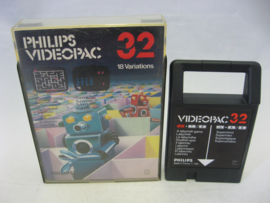
That lead me to believe that I should not constrain the platform to my own personal taste and that I should make it as open as possible.
#SUPERMIND MNAUL SERIES#
I also showed it to Julian, my brother, an entrepreneur himself, always avid for good adventures, co-author in this series of articles, who would too join later on. I showed what I had to a few trader friends, one of which - Andreja - would eventually join the project. I also knew it would be ridiculous to build such a platform for my personal use only. I called this part of the platform the Canvas App, as it uses an HTML5 canvas object to render the graphics.īy that time I knew what I was doing was too big for a single developer. While I was polishing the extraction process, I was also programing the graphical environment to plot the data. The USDT/BTC market in Poloniex spanning four years of history at that time consisted of more that 300 million trade records.Įven when grouped into candles, it was a lot of data. I realized early on that the amount of data to manage was quite big. With trades, candles and volumes can be calculated, and with those a constellation of other data structures, usually known as indicators. The raw data available at exchanges represents trades. It took me several months and many iterations to craft a process that would extract historical data from Poloniex in a way that guaranteed - no matter what happened to the process - that the resulting data set would be reliable, with no errors, holes or missing parts - ever. Still, I knew from day one this platform would be exchange agnostic.
#SUPERMIND MNAUL FULL#
That would allow me to debug strategies visually.Īlthough exchanges provide online and historical data, and because I wanted full control over visualization capabilities, I knew I needed to extract data from exchanges and store it within the system, so that data could be loaded in very specific manners.īy that time, Poloniex was one of the largest crypto exchanges out there, so I started with them. Besides the typical candlestick charts and indicator functions, I wanted bots to overlay their activities and decision-making clues in a graphic fashion, directly over the charts. I had envisioned a platform that would provide a visual environment in which I would be able to browse data in a unique way. I crawled out of bed and sat at the keyboard.īy the end of the day, I was deep down the rabbit hole. Ideas have that effect in obsessive characters. I knew I risked getting sucked into a multi-year adventure to which I would give my 100%, 24/7, until I was satisfied. I had to give it a shot or I wouldn’t stand myself. At 44, having spent my life imagining and creating the wildest projects, I knew this feeling well. Nonetheless, I knew this restlessness would not subside. The crisp morning air screamed through my bedroom window… “get out… it’s awesome out here”. The sun burnt, the gentle spring long gone.

It all seemed clunky, overly complex or constrained to the typical approaches to trading. I had spent some time checking out a few of the trading platforms of the moment and several open source projects. Little did I know I had actually been surfing the start of the biggest bull wave the markets had ever witnessed… I was ready to give it a try at automating the primitive strategies I had come up with.

I had fallen for the illusion that it was quite easy to accumulate profits.
#SUPERMIND MNAUL MANUAL#
Having finalized my commitments with my latest project, I found myself with time to spare, some bitcoin, and an urge to give trading a serious try.Įarlier that year, I had been spending more time than usual doing manual trading and educating myself on the basics. It all started as I woke up one day by mid-summer, 2017, the Danube as the backdrop for what would turn into my first serious trading adventure.īeing deep into bitcoin since 2013, I had been fooling around trading crypto as a hobby without any real knowledge for years. We highly recommend reading Part One before diving under the hood! The Rabbit Hole This article is the second half of a two-piece introduction to Superalgos. A supermind of humans and machines thinking and working together, doing everything required to maximize the group’s collective intelligence so as to minimize the time needed for superalgos to emerge is being built right now.


 0 kommentar(er)
0 kommentar(er)
